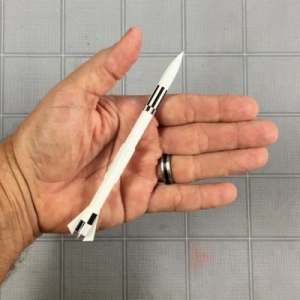Part of the NAR safety code says that rockets should only be made of lightweight materials like balsa wood and paper, but I suppose at freefall from several hundred feet, even a plastic and balsa rocket has some decent momentum.
Yep, plastic, cardboard, and balsa. With a sharp enough nose cone you can punch through thin sheet metal. I wouldn't expect to get through 1" or anything, but it's amazing how much energy a little one can pick up on the way down.
East coast launch sites are more difficult. I'm fortunate to have have a couple of near-ish large open areas available so the club can hold launches. The little models are still a lot of fun and I still build and fly them. The big stuff gets expensive fast.


